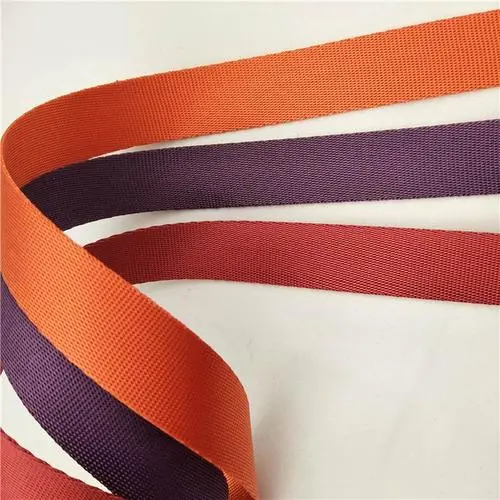07
2024
-
06
Omni-directional analysis of webbing manufacturing process
Author:
Omni-directional analysis of webbing manufacturing process
1. Introduction Ribbon manufacturing is an industry with a long history and continuous technological development. In the modern manufacturing industry, the application of webbing is very extensive, involving clothing, bags, footwear, industry, agriculture and other fields. This article will analyze the webbing manufacturing process in all directions to help readers understand the production technology and process in this industry.
2. Raw Material Preparation The first step in webbing manufacturing is raw material preparation. Raw materials mainly include yarn, chemical fiber thread, cotton thread and so on. These raw materials need to be screened and tested to ensure that their quality meets production requirements. In addition, it is necessary to choose the appropriate color and material according to the product requirements and design.
3. loom selection The selection of a ribbon loom is crucial to the ribbon manufacturing process. According to different product characteristics and production requirements, select the appropriate ribbon machine model. Common belt looms include knitting belt machines, braided belt machines, and shuttleless belt looms. These machines have different characteristics and advantages. Choosing the right equipment can help improve production efficiency and product quality.
4. weaving process In the weaving process, the first step is the threading of the weft and the carding of the warp. The weft and warp yarns are then interlaced into a ribbon by the mesh system of the loom. In this process, it is necessary to control the tightness, width, thickness and other parameters of the webbing to ensure product quality.
Dyeing and printing are essential links in the manufacturing process of 5. dyeing and printing webbing. According to customer needs and product design, the webbing is dyed and printed. In the dyeing process, it is necessary to control the quality, ratio, temperature and time of the dye to ensure that the color is bright and uniform. Printing is achieved through thermal transfer printing, lithography and other technologies, can produce a variety of patterns and logo.
6. finishing and inspection After the webbing is manufactured, finishing and inspection are required. The finishing includes trimming, ironing, packaging and other links to ensure that the product appearance is neat and beautiful. Inspection is a comprehensive inspection of product quality, including size, appearance, strength, wear resistance and so on. Only products that have passed strict inspection can be sold at the factory.
7. technology innovation and development trend With the continuous progress of science and technology, the webbing manufacturing industry is also developing. New production technology and equipment are constantly emerging, such as intelligent ribbon machine, digital printing and dyeing technology. The application of these new technologies and equipment helps to improve production efficiency, reduce energy consumption and improve product quality. In the future, the webbing manufacturing industry will develop in the direction of intelligence, green and high-end.
8. Conclusion This paper analyzes the manufacturing process of webbing in all directions, from raw material preparation to finishing and testing, to technological innovation and development trend. It is hoped that readers can have a deeper understanding of the production technology and process of the webbing manufacturing industry through this article. With the continuous development of science and technology, I believe that the ribbon manufacturing industry will usher in a broader development prospects.
Previous Page
Previous Page
07
2024-06
Analysis of the latest trends in the webbing manufacturing industry
07
2024-06
Introduction of webbing technology
07
2024-06
07
2024-06
Omni-directional analysis of webbing manufacturing process
07
2024-06
Comprehensive analysis of webbing manufacturing process
11
2018-12
What is the specific weaving method of crochet webbing?
11
2018-12
What are the material of the hook and hook fastener?
Subscribe and get news






Contact Information
Yonglong Weaving (Huizhou) Co., Ltd.
Address: Changbu Village, Xinwei Town, Huiyang District, Huizhou City, Guangdong Province
Telephone:13829905177Chen Sheng Phone:13631502993Miss Liu
Fax: 0752-3521132
E-mail:info1@yunglung.com
Enterprise website:www.yunglung.com
Focus on us

WeChat Public Number
Copyright©2024 Yonglong Weaving (Huizhou) Co., Ltd.

